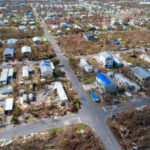Willis Re, the reinsurance unit of the Willis Group, has issued a comprehensive report that reviews the current state of the reinsurance market in light of the past 18 months.
While emphasizing that the Gulf hurricanes remain uppermost in “all our minds as we strive to finalize the 1st January 2006 renewals,” the report also reminds the world of numerous other disasters – the 2004 tsunami, the Pakistan earthquake, the fires in Southern Europe last summer and windstorm Erwin in February 2005.
In a Foreword to the report Willis Re Chairman and CEO Grahame Millwater indicated that at least “part” of the reinsurance “markets such as Retro, Marine, Energy and U.S. Property [are] in significant turmoil and [are] undergoing major revisions of terms, conditions and structure.” However, he continued, “in other parts of the reinsurance market, whilst generally we have seen an end to the ‘softening’ of the past 18 months, the environment is best described as ‘stable’ rather than ‘hard.'”
Millwater asks the rhetorical question; “whether this ‘Tale of Two Markets’ is temporary or will be sustained. One has to consider the backdrop. Certain factors would suggest temporary. Whilst rating agencies have naturally focused their efforts on those companies suffering significant losses and or starting up, their changed requirements in respect of the increased capital deployed against given loss scenarios will affect the insurance and reinsurance sectors globally.
“Also, as catastrophe models are recalibrated to incorporate more aggressive assumptions regarding potential losses, these will impact across the world. We must also remind ourselves that whilst hurricane loss estimates are extremely high, the values actually paid to date are currently still relatively small – the actual pain of significant outflows of cash is always a reality check.”
He points out that there are “also factors that suggest any hardening trend will be limited. When WTC occurred in 2001, the insurance and reinsurance balance sheets were generally in poor shape. This contrasts with 2005, where prior to the hurricanes, balance sheets have been strong and combined ratios have been healthy and improving. The hurricanes have severely damaged the financial health of certain US insurers, specialty line underwriters and many reinsurers, but outside of that insurers have had several good years and appear reluctant to risk losing market share by striving to increase prices.
“Additionally, there is new capital arriving in the form of recapitalization of existing participants, new start-ups, and new types of structured products. The hedge funds are major players in all of these areas, and are here to stay in one form or another. This new capital will provide a fresh supply of capacity, and will be encouraged to write business outside the distressed market if for no other reason than the rating agencies are looking for the markets to diversify.”
Turning to the broader picture Millwater warned that “the fundamental trends cannot be ignored however. Sources of risk are increasing, the frequency and severity of catastrophes seem to be rising, and the values at risk increase not only with urbanization and infrastructure development, but with increased penetration of the insurance product. Consequently, rating agencies, risk modelers, and reinsurance companies are going to require more transparency, analysis, exposure control and structural clarity. These will not be localized phenomena, but will be global requirements and will undoubtedly impact the reinsurance structures of our clients around the world.”
He added that the “team at Willis Re remains committed to helping our clients navigate this increasingly complicated and sophisticated environment.”
Chris Clark, Willis Re Specialty CEO, commented: “As we go into 2006, the reinsurance environment should become clearer though probably no more palatable to either party (Insurers and Reinsurers). Certain reinsurers will privately admit defeat in their retrocessional renewals and others will publicly announce further development in their 2005 losses. Some will do both.”
He added that the “rating agencies will continue to hold enormous power thereby, to some extent de facto regulating the market. They will also temper the enthusiasm of the new reinsurers possibly disappointing their investors and the promised ROE. The capital markets will continue to emerge as an alternative capacity source for clients but not the complete solution. Companies with large Gulf/South East exposures will encounter less debate at renewal than their peer group did at January 1st but this will be as a result of reinsurers finally realizing their own position rather than anything else. Consequently insurers must be carefully advised what the right price is, as paying over the odds will not necessarily attract any additional capacity.”
The full report can be obtained on the reinsurer’s Website at:http://www.willisre.com.
Was this article valuable?
Here are more articles you may enjoy.

 DraftKings Sued Over ‘Risk-Free’ Bets That Were Anything But
DraftKings Sued Over ‘Risk-Free’ Bets That Were Anything But  Report Using Aerial Imagery Keys in on Hailstorm Risks to Colorado Homes
Report Using Aerial Imagery Keys in on Hailstorm Risks to Colorado Homes  4,800 Claims Handled by Unlicensed Adjusters in Florida After Irma, Lawsuit Says
4,800 Claims Handled by Unlicensed Adjusters in Florida After Irma, Lawsuit Says  EVs Head for Junkyard as Mechanic Shortage Inflates Repair Costs
EVs Head for Junkyard as Mechanic Shortage Inflates Repair Costs 